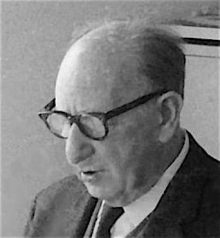
Arthur Korn was born in Breslau, Germany [now Wroclaw, Poland] on 4 June 1891 and studied at the Königliche Kunst- und Kunstgewerbeschule in Berlin from 1909 to 1911. Following World War One he worked briefly in the office of Erich Mendelsohn (1887-1953) in Berlin, before, in 1922, forming a partnership with Sigfried Weltzmann (1891-1978). Projects by the partnership included the Villa Goldstein in Grünewald, Berlin (1922), the Kopp and Joseph shops in Berlin (1922-30), the Fromm Factory in Köpenick, Berlin (1928), and the Intourist Shop on Unter den Lindin, Berlin (1929)
During the 1920s he was associated with some of the key figures in the Modern movement and joined Der Ring, an influential architectural collective founded in Berlin in 1926, members of whom included Walter Gropius, Mies van der Rohe and Hans Scharoun. In 192 his book Glas im Bau und als Gebrauchsgegenstand, a study of the use of glass in modern architecture, was published.
When the National Socialists came to power in Germany, Korn, who was Jewish, was prevented from working as an architect. He subsequently moved to Yugoslavia and then in 1937 to England. He settled in London and soon after his arrival began working with Edwin Maxwell Fry (1899-1987) and Frances Reginald Stevens Yorke (1906-1962) in their office in London from 1938 to 1941. He was also involved with Jack Pritchard in his Isokon Furniture Company in 1939-40.
From 1941 to 1945 he taught at the Oxford School of Architecture, and from 1945 to 1965 at the Architectural Association in London.
Korn was a member of the MARS. Modern Architectural Research Group. He was chair of the town planning subcommittee and was involved in drawing up the group's plan for post war London published in 1942. In 1969 Korn moved to Austria. He died in Vienna on 14 November 1978.
Benton, Charlotte. A different world: emigre architects in Britain 1928-1958. London: RIBA Heinz Gallery, 1995